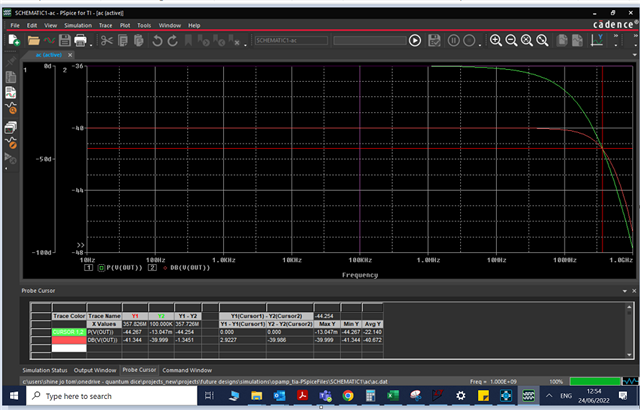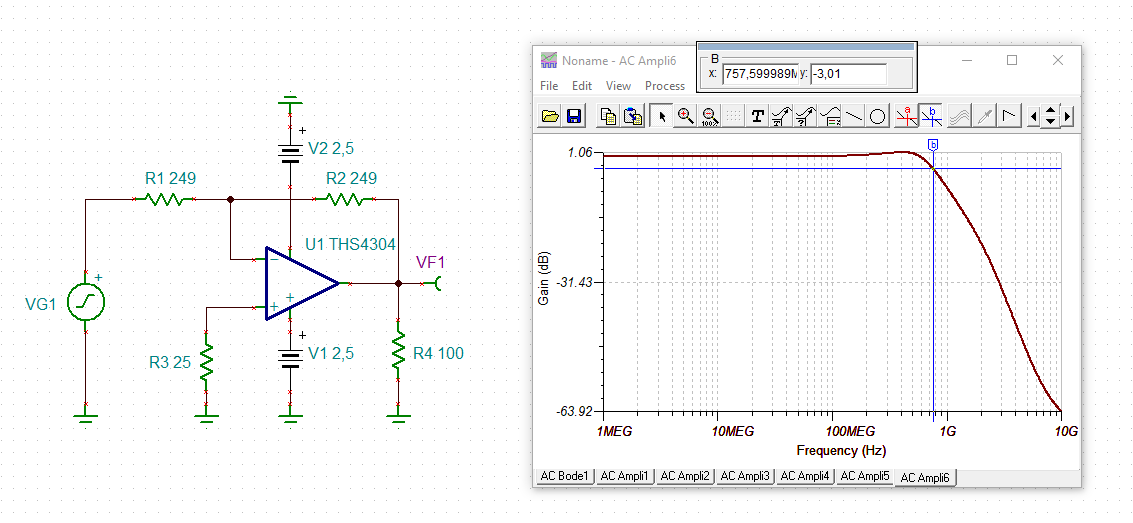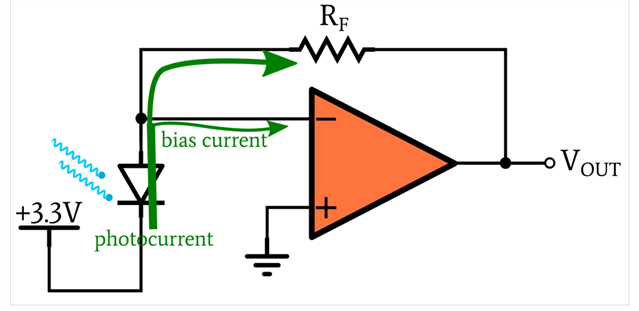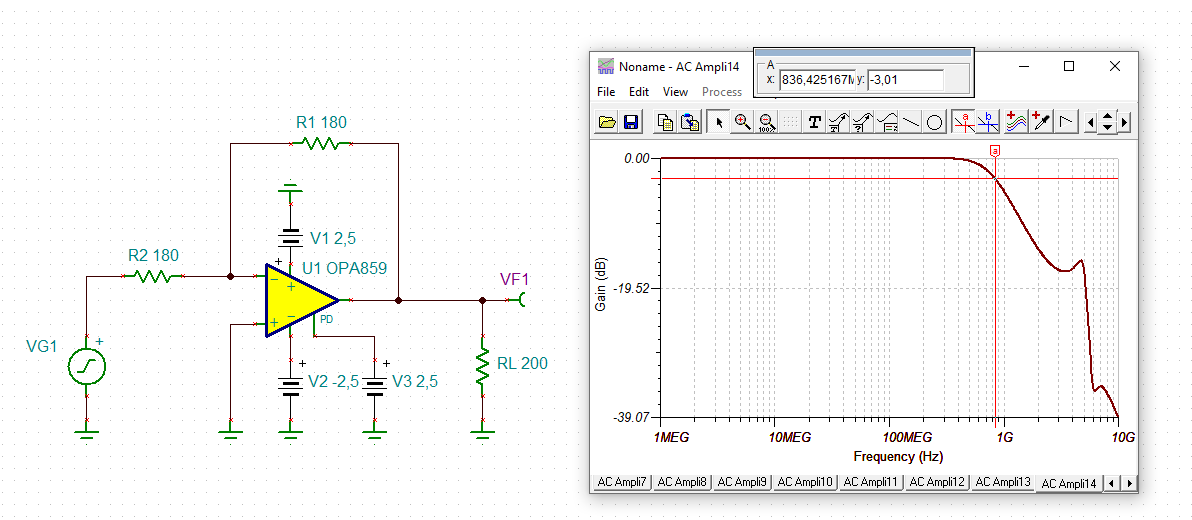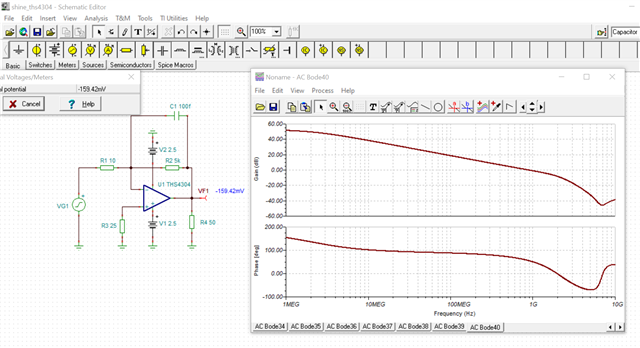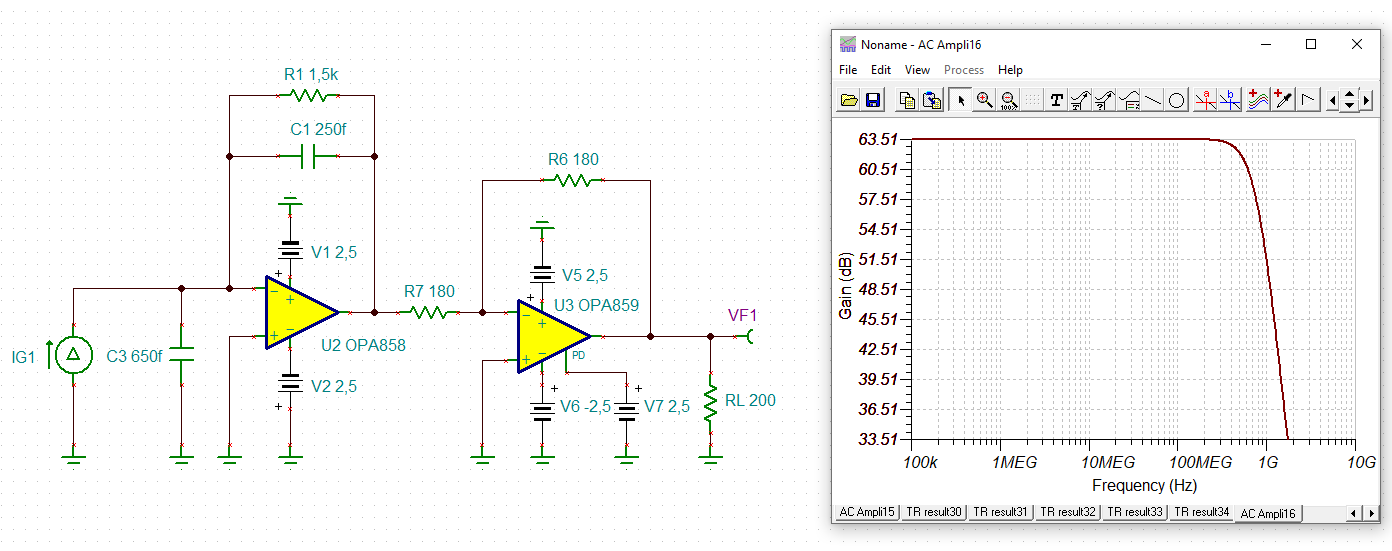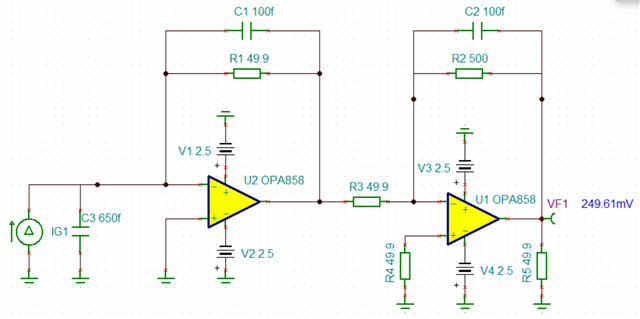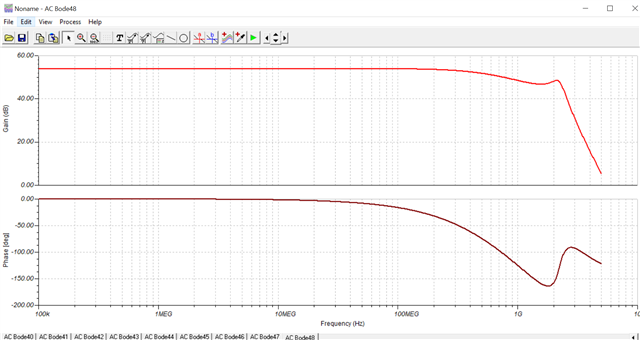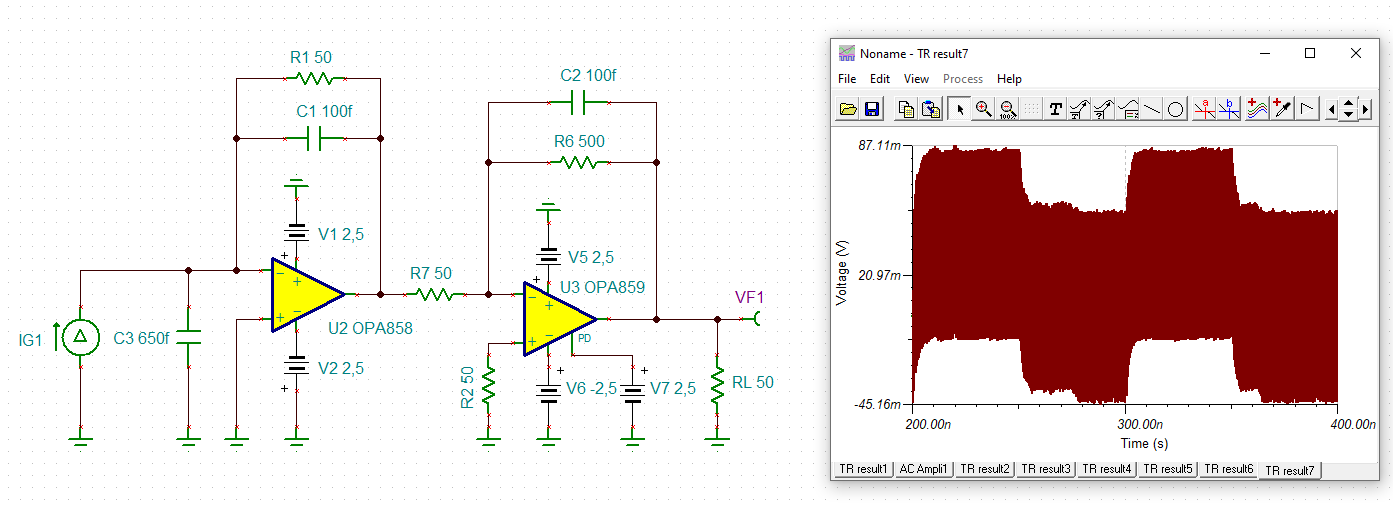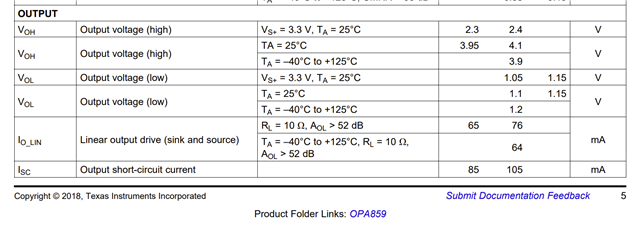Other Parts Discussed in Thread: OPA858, OPA855, TINA-TI, LM324, OPA859
Hi,
I purchased an OPA858DSGEVM from TI recently. I would like to design a stable transimpedance amplifier using this evaluation board. Please find below the photodetector specifications:
1)capacitance: 650fF
2)maximum current = 330uA
3)Maximum output voltage = 500mV
4)Bandwidth required = 500MHz
Could you help designing a stable TIA, please? The one I designed seems to oscillate.



